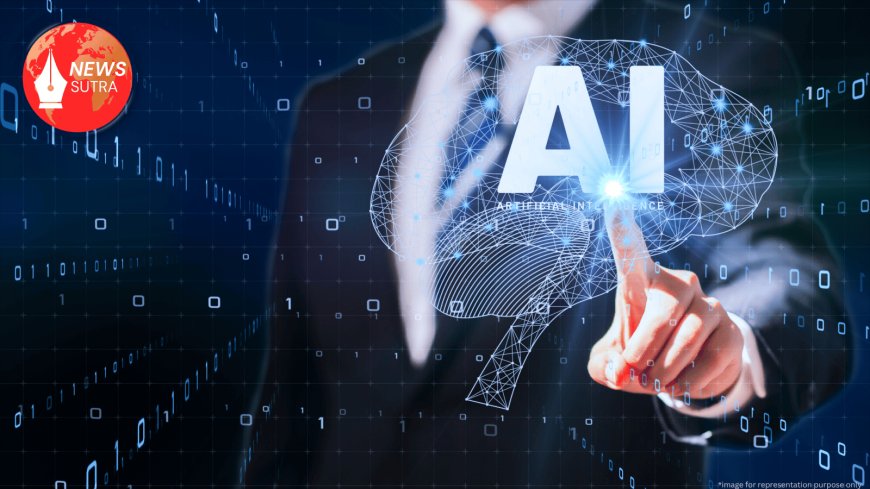India’s AI Manufacturing Push Gains Momentum: Minister Ashwini Vaishnaw Signals Growth, While Experts Weigh Labor Impact
IT Minister Ashwini Vaishnaw confirms India’s AI manufacturing growth amid reports on automation's labor impact. Read how policy, investment, and global trends intersect.

India’s commitment to becoming a global manufacturing powerhouse in artificial intelligence (AI) hardware and automation technologies is accelerating. Union Minister for Electronics and IT, Ashwini Vaishnaw, confirmed that the country is witnessing a "robust uptick in high-tech manufacturing" fueled by AI integration, strategic policies, and expanding production lines.
The remarks came amid fresh Economic Times reports that analyze the broader economic impact of automation, especially on the Indian labor market, prompting national discussions about balancing growth with employment protection.
Manufacturing Growth Driven by AI and Policy Tailwinds
Speaking at a tech industry roundtable in Bengaluru on Monday, Vaishnaw detailed India’s rising capacity for manufacturing key AI components, including AI chips, embedded systems, sensors, and edge computing modules. These advances are being powered by:
-
The Production Linked Incentive (PLI) Scheme
-
India Semiconductor Mission
-
Strategic tie-ups with global AI hardware players
-
Private sector investments in smart factories and robotics
“India is no longer just assembling devices; we’re designing, fabricating, and testing intelligent systems that support global AI innovation,” Vaishnaw said.
The expansion is particularly visible in hubs like Tamil Nadu, Karnataka, Telangana, and Gujarat, where new AI production parks and testing facilities are being set up.
Sector-Wide Implications: What the Data Says
According to data from Invest India, India's electronics manufacturing market crossed $105 billion in FY 2024, with the AI hardware segment growing at over 35% annually.
Key players like Tata Elxsi, Dixon Technologies, and Sahasra Electronics are diversifying into AI module assembly and neural processors, supported by global vendors such as AMD and Nvidia.
New investments are also streaming into semiconductor packaging units, with strong government backing. India’s first commercial OSAT (Outsourced Semiconductor Assembly and Test) facility is set to begin operations in Surat by late 2025.
Automation Concerns: Disruption vs. Opportunity
The Economic Times’ investigation into India’s automation transition highlights growing anxiety in traditional manufacturing sectors. With AI-driven systems replacing repetitive human tasks, questions around job displacement and wage stagnation are gaining political and academic attention.
Economists note that while automation improves output quality and operational efficiency, it also threatens low- and mid-skill roles, especially in textile, auto components, and food processing industries.
A recent NITI Aayog whitepaper recommends proactive steps such as:
-
Upskilling labor in AI operations, machine learning, and predictive maintenance
-
Developing a national reskilling framework
-
Incentivizing firms to balance automation with job creation
Union Labour Minister Bhupender Yadav has hinted that upcoming labor codes may include provisions for industries adopting disruptive technologies.
Education and Talent Development
As India scales AI manufacturing, technical education and R&D collaboration are emerging as crucial enablers. Institutions like IIT Hyderabad, IIIT Bengaluru, and IISc are now working on AI design optimization, chip packaging, and low-power inference systems tailored for Indian needs.
The government is also funding AI Centers of Excellence, with partnerships involving tech majors such as Intel, Bosch, and Qualcomm, to ensure that Indian engineers are at the forefront of global manufacturing innovation.
India’s Strategic Position in Global AI Supply Chains
With growing geopolitical distrust between the US and China, India is becoming a preferred destination for diversifying AI and semiconductor supply chains. The rise of friendshoring—a term used to describe supply-chain partnerships with politically aligned nations—has benefitted India’s ambitions.
As part of the India-U.S. Initiative on Critical and Emerging Technologies (iCET), discussions are ongoing to build joint AI testing and production platforms, aimed at reducing dependence on China-centric ecosystems.
What Lies Ahead
Looking forward, India’s strategy appears to hinge on:
-
Sustainable tech ecosystem development
-
Export competitiveness in smart components
-
A balanced policy approach to automation and jobs
With the government committing to long-term capital investment, educational reforms, and global engagement, AI manufacturing could become India’s next economic engine—provided it addresses the challenges of social inclusion and workforce transition.
Final Thoughts
India’s AI manufacturing expansion is not just about assembling advanced technology—it's about shaping the future of global innovation from the ground up. As automation transforms industries and the labor market, the path forward must be intelligent, inclusive, and internationally collaborative.
If executed with foresight, India may not only catch up with but potentially lead the next wave of the AI industrial revolution.











